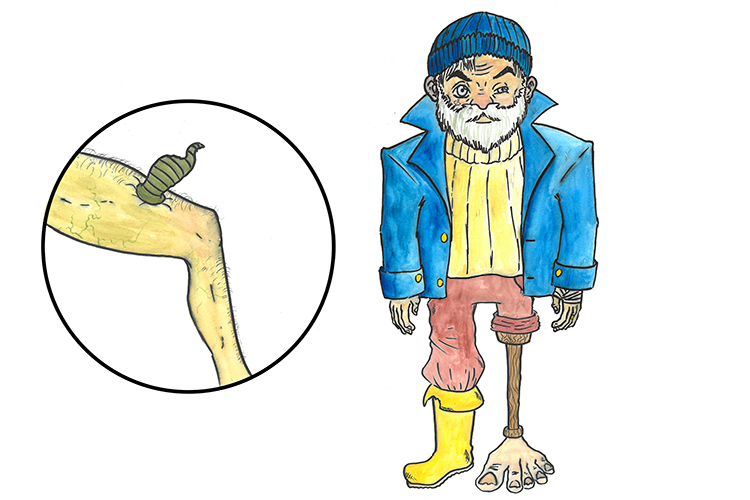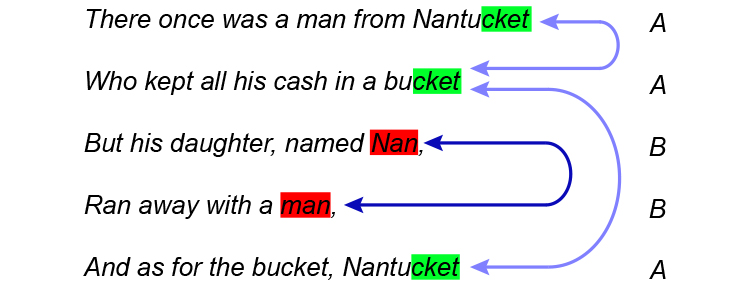Limerick
A limerick is five lines long and uses the anapestic foot – two unstressed syllables followed by one stressed syllable, or Short-Short-Long (SSL).

The old sailor lost his limb to rickets (limerick) and a pest (anapest) on his leg. His five (five lines) toes were preserved and placed on his new leg.
The five lines are a mixture of trimeter (three feet per line) and dimeter (two feet per line).
Lines 1, 2 and 5 should ideally consist of three anapests each (trimeter); lines 3 and 4 are shorter, constructed of two anapests each (dimeter), as follows:
Line 1: da da DA da da DA da da DA
Line 2: da da DA da da DA da da DA
Line 3: da da DA da da DA
Line 4: da da DA da da DA
Line 5: da da DA da da DA da da DA
However, there are often fewer or more short syllables. In the following example note, for instance, that line one starts with just one short syllable (“There”), and finishes with a short syllable (the “et” on the end of “Nantucket”):
The man from Nantucket
There once was a man from Nantucket
Who kept all his cash in a bucket.
But his daughter, named Nan,
Ran away with a man,
And as for the bucket, Nantucket.
Notice that the rhyme scheme of a limerick is:
AABBA

Limerick rhythms can vary
Sometimes, the stressed syllables can be:
da DA da da DA da da DA
as in
There WAS a young MAN from KharTOUM.
Or, sometimes:
da da DA da da DA da da DA da da
as in:
What a WONderful BIRD is the PELican
Another example limerick
The pelican
What a wonderful bird is the pelican,
His bill can hold more than his beli-can.
He can take in his beak
Food enough for a week
But I’m damned if I see how the heli-can.




